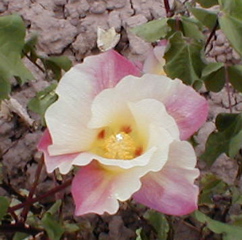
This color is alive
color development information
The color that grows within the cotton can be set by simmering it in water whose pH is greater than 9. This can be achieved by adding a little baking soda to the water that you are boiling the yarn in. Washing soda also works, but can clump up. Another method is to wash the fabric or garment in hot water using washing soda for the first laundering, but allow it to soak for 10-20 minutes in that hot higher pH bath. Alternatively you can simply wash the item made from the cotton in warm water with a normal cotton detergent. The color will develop into its full depth over a number of washings. If you want the color to remain stable, then use a pH neutral washing solutions (such as a products for wool washing).
The brown tones are formed from water soluble and water insoluble tannins. Found on the surface and inside the lumen of the fibers themselves. In the simmering or first laundering the water soluble tannins are released along with the surface waxes that prevent the fiber from absorbing water. Which is its purpose in protecting the cotton seed from sprouting inside the cotton boll if it gets rained upon prior to picking. I’ve always wanted to figure out how to use all this valuable water soluble tannin that washes out. perhaps someday one of us will figure a way to save and use it. In the meantime the water insoluble tannins do become set or fixed by the higher pH and heat.
The green color is composed of waxes classified as suberins. They are laid between each of the 20-35 layers of cellulose within the cotton fiber. They remain fascinating to me after all these decades of working with them. The changes in color are remarkable. And malleable; as they react to acidic liquids by turning yellow and basic liquids by turning grey/green. But the color changes are reversible and not permanent. This is why, however, one must be sure that any boiling of these cottons is in water that is basic, not acidic. Acids degrade all cellulosic fibers anyway. Bases strengthen them. It is why they mercerize cotton to give it additional strength. Which is the opposite of the fibers composed of proteins such as wool, cashmere, alpaca, and silk. The longer the yarn simmers, the darker the color will become. Up until about 40 minutes. Then it seems to be finished.
Below is a study of launderings of the cotton that is pure color, not blended with white cotton. When it is mixed in the spinning or fabrication with white cotton that is not bleached, the white color gets whiter and the color intensifies and thus the character of the yarns really changes.